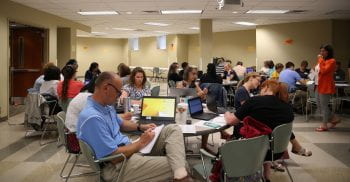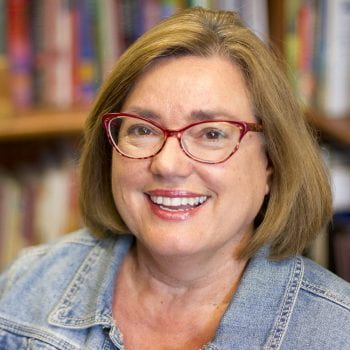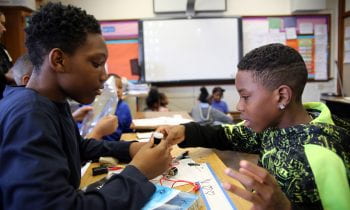Activity: Gather your animals together. Line them up from smallest to largest. Make groups of animals, by kind or number of limbs. Pick one animal and find the eyes, ears, nose and mouth on it. Compare those features to different toy animals. Safety Tip: Watch out for loose parts on toys that could be pulled […]
Tag: Institute for School Partnership
What Can Float in a Pool?
Activity: Look around. Did you bring anything to the pool that can float? What about an empty soda can, or some aluminum foil? Did you bring any floaty toys? Put each of the items in the water and see how they float. Can you change the material so they would sink? If they can float, […]
How Is Milk Different Than Water?
Activity: Pour a little milk onto a plate. Pour a small amount of water onto a different plate. Add drops of food coloring around the edges of the plates. In the center of the plate add a few drops of dish detergent. Notice what happens on each plate. Safety Tip: Do not drink the milk […]
How Are Fold Mountains Formed?
The most common form of mountain ranges, like the Rockies, are fold mountains. How are they made? Activity: Lay down a stack of towels, each one folded in half. If possible use towels of various colors. Put a box on either side of the towels. Push the boxes (continental plates) towards each other and observe […]
Stadium Wave
How does standing up in your seat and raising your arms turn into a stadium wave? Activity: The next time you are at the ballpark take notice of a few things about the stadium wave. You can try this with your hand. Lift one finger up at a time and put it down before you […]
Are All Leaves the Same?
Activity: Look for leaves on the way home. Notice, where they are – on a tree, a bush, a plant or maybe they are on the ground? Ask a parent if you can collect some, or take a picture on their phone. See how many different kinds of leaves you can find. Questions to ask: […]
St. Louis area educators attend leadership retreat at Washington University

It’s mid-June and while students are out on summer break, teachers never stop learning. Victorious arms shoot up in the air as towers of playing cards sway precariously on tables. This simple card activity is an example of how teachers can help students develop identities as STEM-capable learners. About 50 educators from school districts throughout […]
ISP's Victoria May honored for work with students

Victoria L. May, assistant dean in Arts & Sciences and executive director of the Institute for School Partnership, has been honored for her work with students. During the University College Recognition Ceremony on May 16, May received University College’s 2018 Dean’s Faculty Award. The honor is presented each year to an outstanding University College faculty member. […]
ISP helping pilot new math, technology curriculum in St. Louis schools

It’s mid-afternoon at Walbridge Elementary School and the hallways are buzzing. Literally. Electronic buzzer sounds spill out of classrooms as students work on circuitry projects. Jaime Gilligan, with Washington University’s Institute for School Partnership (ISP), is touring the school with principal Mildred Moore. Walbridge is one of several schools in the St. Louis Public School […]
David Kirk
Evolution should be an important part of a sound K-12 science curriculum For much of his career, Washington University biology professor David Kirk, PhD, focused his research on the spherical, multicellular green alga, Volvox carteri. Kirk, in collaboration with his late wife Marilyn M. Kirk, their students, and other fellow scientists had initially focused on […]